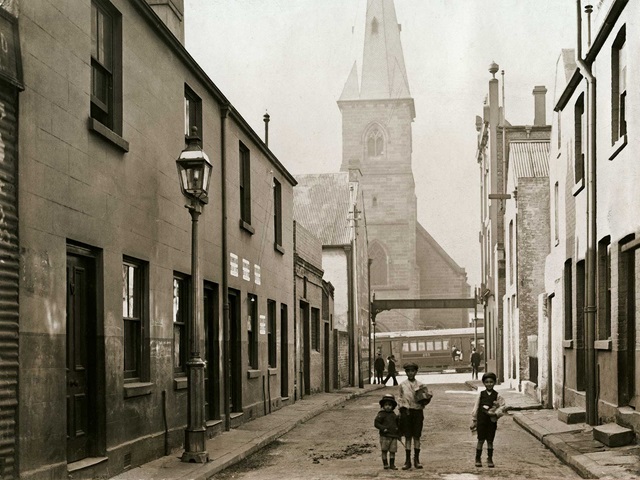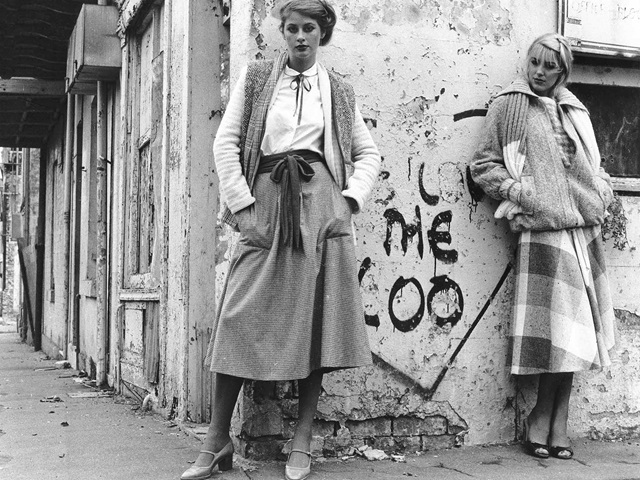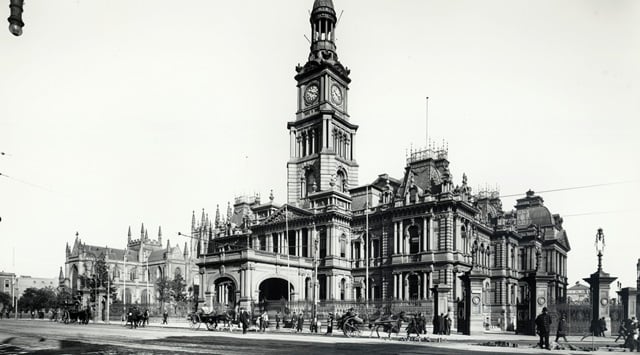History of Macquarie Place Park
Contains the obelisk erected by Governor Macquarie in 1818 to mark the place from which public roads in the colony were measured.
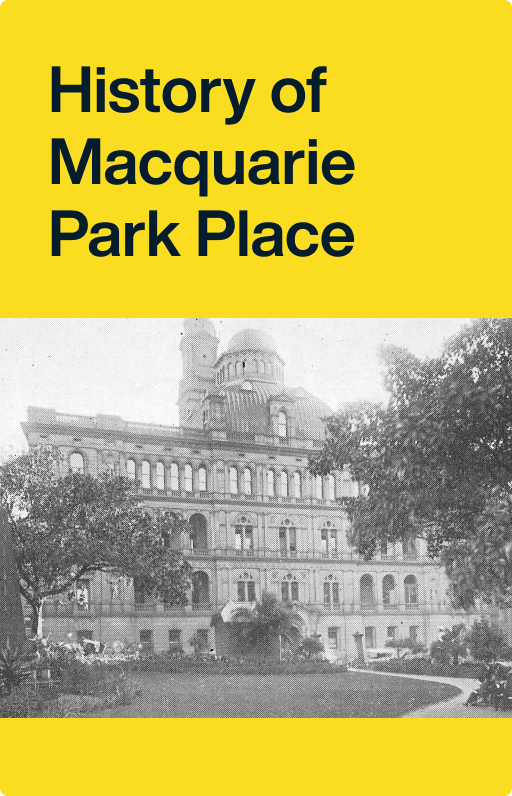
Macquarie Place Park is on the corner of Bridge and Loftus streets, Sydney.
This triangular plot of land was a rare open space within the town that grew up at Sydney Cove after the first European settlement in 1788. The origin of the name is the street, now incorporated in the park, which ran from the Tank Stream Bridge to Kings Wharf. This triangle was surrounded by the residences of the Governor and civil officers (judge advocate, chaplain and surveyor) and the store buildings. On the side next to Sydney Cove, town leases were held by some of the most prominent merchants in the colony, including Simeon Lord, Thomas Randall, William Chapman, Andrew Thompson and Thomas and Mary Reibey.
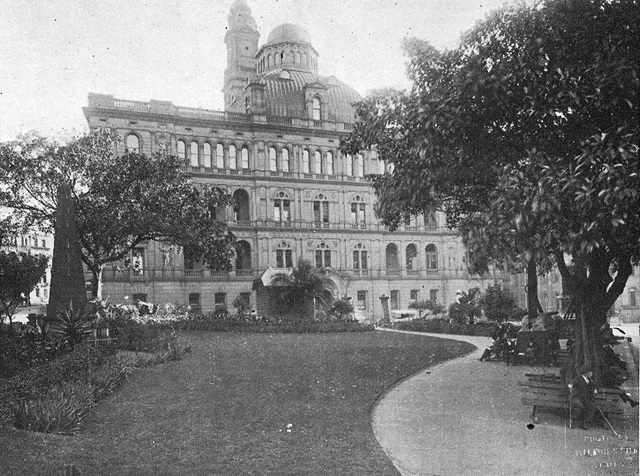
One town lease occupying the actual park site was held by Shadrach Shaw, a clerk in the Transfer Office of the Bank of England who was transported for trying to defraud a customer and arrived in Sydney in 1792. He was the first external trader in the colony, distributing goods imported by the NSW Corps officers during the 1790s. He sold his business to Simeon Lord when his sentence expired in 1798 and returned to England.
Macquarie Place was formalised as an open space by Governor Macquarie in 1818 with the obelisk used to measure distances in the colony, and a sandstone Doric fountain the following year. A sandstone dwarf wall and iron palisade fence were built around the site, and although the railings were removed between 1905 and 1910 part of the wall remains.
The construction of Circular Quay from 1839 to 1847 resulted in the extension of streets including Castlereagh Street (now Loftus Street) which took up a large part of the reserve so that the obelisk, which used to be in the centre, is now on one side. The park was enlarged in the opposite direction in the 1970s by the closure of Macquarie Place (street) and its incorporation into the park. Planting in this park is dominated by 2 Moreton Bay figs on the western boundary. 2 plane trees were planted in the Loftus/Hunter Street corner by the Queen and Duke of Edinburgh in 1954 to mark the beginning of the Remembrance Driveway from Sydney to Canberra.
Anchor and cannon from HMS ‘Sirius’
Large anchor from the 1790 wreck of HMS ‘Sirius’ on Norfolk Island, salvaged in 1905 and erected here in 1907. The nearby cannon from the same ship was used as a signal gun at South Head from 1810.
Statue of TS Mort
Governor Macquarie’s Doric drinking fountain, designed by Francis Greenway, was demolished to make way for the statue of Thomas Sutcliffe Mort. He was a leading Sydney businessman in auctioneering and pastoral finance, owner of the largest commercial dry dock in Australia, a pioneer of frozen meat exports and a founder of the Australian Mutual Provident Society (AMP). He died in 1878 and the statue, by sculptor Pierce Francis Connelly, was erected in 1883.
Canopy fountain
The ornate canopy drinking fountain was 1 of 8 ordered from Macfarlane’s in Scotland in 1870. This example, with the warning ‘keep the pavement dry’, was relocated to Macquarie Place in the 1970s.
Lavatory
The former men’s lavatory built in 1908 is a fine example of Edwardian civic design. It is an underground structure surmounted by a metal and glass dome and surrounded by handsome masonry screen walls with late Art Nouveau ironwork over the entrance. Currently it has been de-commissioned and is filled with sand. This material would allow for removal and re-use in the future.
Other items
Sandstone gate piers and curbing on Bridge Street erected by Walter Renny, Mayor in 1869.
Small bronze fountain by sculptor Gerald Lewers, completed in 1960, as a memorial to sculptor John Christie Wright who was killed at Bullecourt in 1917 during World War 1.
Further reading
Heritage Group State Projects NSW Public Works, 'Men’s Lavatory, Macquarie Place, Sydney, Conservation Plan', 1993
Edward Higginbotham and Associates, 'Historical and Archaeological Assessment Report of Macquarie Place, Sydney', 1995
